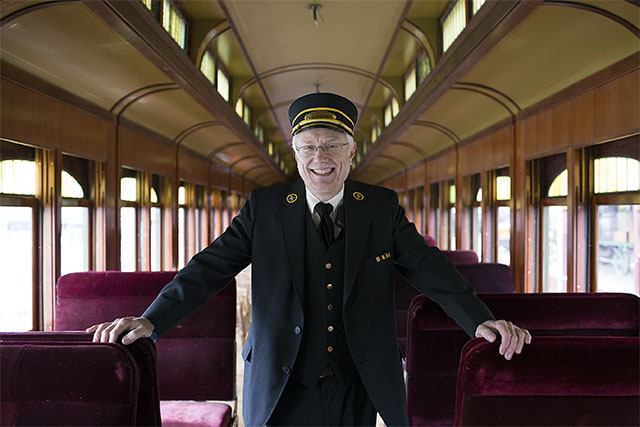For an industry that started declining in the 1950s, the Northwest Railway Museum is picking up steam, literally. The museum staff and volunteers are resurrecting steam engine 924, a 100-year-old locomotive packed with Northwest history, but they aren’t stopping there.
“It was donated (to us) in 1968, I think, from Inland Empire, a paper company in Spokane,” said Richard Anderson, museum executive director.
“The locomotive is from the Northern Pacific Railway, and (the paper) company purchased it in 1925 from Seattle. It was sold because it was too light for the Northern Pacific, but it was out there for approximately 25 years. It worked on the Seattle docks, it worked in Everett, it worked down in Auburn.”
Only a handful of operable steam engines are in Washington and only a few hundred in the U.S. Anderson said it’s an important part of the Northwest’s colorful history of Hudson Bay Company fur traders and sawmill workers to preserve these machines.
“Steam was the engine of the industrial revolution – that’s what made the railroad possible,” he said. “Without the steam engine, we wouldn’t have had the rapid expansion (we did)… it made a huge difference all over the world. The story we’re telling here is mostly pre-World-War-II, and that’s before we saw interstate highways and the highway transportation system we have today.
“Yes, you could drive a car theoretically to Spokane,” he continued, “but it wasn’t something that your average folk would do in 1935 — you would have taken the train.”
The museum has only eight staff members and a hearty 137 volunteers, and its wheels won’t stop turning. Once 924 is finished, most likely by the end of this year, Anderson said the team is looking ahead to begin working on a spare steam engine with less historical significance to run every weekend.
The steam engines aren’t the only items in the works for the railway museum. In the conservation and restoration center, they’re currently insulating the roof of the 100-year-old Coach 276 and riveting a cistern for steam engine 924, while also finalizing plans to build a library near the 10-year-old train shed.
The library will be equipped with restrooms, classrooms and office space and it will house the museum’s collection of 5,000 vintage book, the oldest text being a 1854 rulebook from Great Britain.

The museum is funded by grants and earned income from ticket sales, but Anderson said the museum gives back to the community by purchasing materials from local companies like Chinook Lumber, Napa Auto Parts, Ace Hardware and Carmichael’s, to name a few.
“It’s an anchor attraction,” Anderson continued about the railway museum. “We bring in approximately 120,000 people a year that come to experience a program at the museum. That in and of itself is a tremendous economic stimulus here in the Valley.
“We spend thousands of dollars in the local economy in provisioning the museum. People think of it as a service-type experience that they get, but we’re actually building things here so we have certain aspects of our business that behave like a primary industry… albeit, we’re very small, we’re building things.”
“The locomotive is from the Northern Pacific Railway, and (the paper) company purchased it in 1925 from Seattle. It was sold because it was too light for the Northern Pacific, but it was out there for approximately 25 years. It worked on the Seattle docks, it worked in Everett, it worked down in Auburn.”
Only a handful of operable steam engines are in Washington and only a few hundred in the U.S. Anderson said it’s an important part of the Northwest’s colorful history of Hudson Bay Company fur traders and sawmill workers to preserve these machines.
“Steam was the engine of the industrial revolution — that’s what made the railroad possible,” he said. “Without the steam engine, we wouldn’t have had the rapid expansion (we did)… it made a huge difference all over the world. The story we’re telling here is mostly pre-World-War-II, and that’s before we saw interstate highways and the highway transportation system we have today.
“Yes, you could drive a car, theoretically, to Spokane,” he continued, “but it wasn’t something that your average folk would do in 1935 — you would have taken the train.”
The museum has only eight staff members and a hearty 137 volunteers, and its wheels won’t stop turning. Once 924 is finished, most likely by the end of this year, Anderson said the team is looking ahead to begin working on a spare steam engine, with less historical significance, to run every weekend.
The steam engines aren’t the only items in the works for the railway museum.
In the conservation and restoration center, they’re insulating the roof of the 100-year-old Coach 276 and riveting a cistern for steam engine 924, while also finalizing plans to build a library near the 10-year-old train shed.
The library will be equipped with restrooms, classrooms and office space and it will house the museum’s collection of 5,000 vintage books, the oldest text being a 1854 rulebook from Great Britain.
The museum is funded by grants and income from ticket sales, but Anderson said the museum gives back to the community by purchasing materials from local companies such as Chinook Lumber, Napa Auto Parts, Ace Hardware and Carmichael’s.
“It’s an anchor attraction,” Anderson continued about the railway museum. “We bring in approximately 120,000 people a year who come to experience a program at the museum. That in and of itself is a tremendous economic stimulus here in the Valley.
“We spend thousands of dollars in the local economy in provisioning the museum. People think of it as a service-type experience that they get, but we’re actually building things here so we have certain aspects of our business that behave like a primary industry… albeit, we’re very small, we’re building things.”


